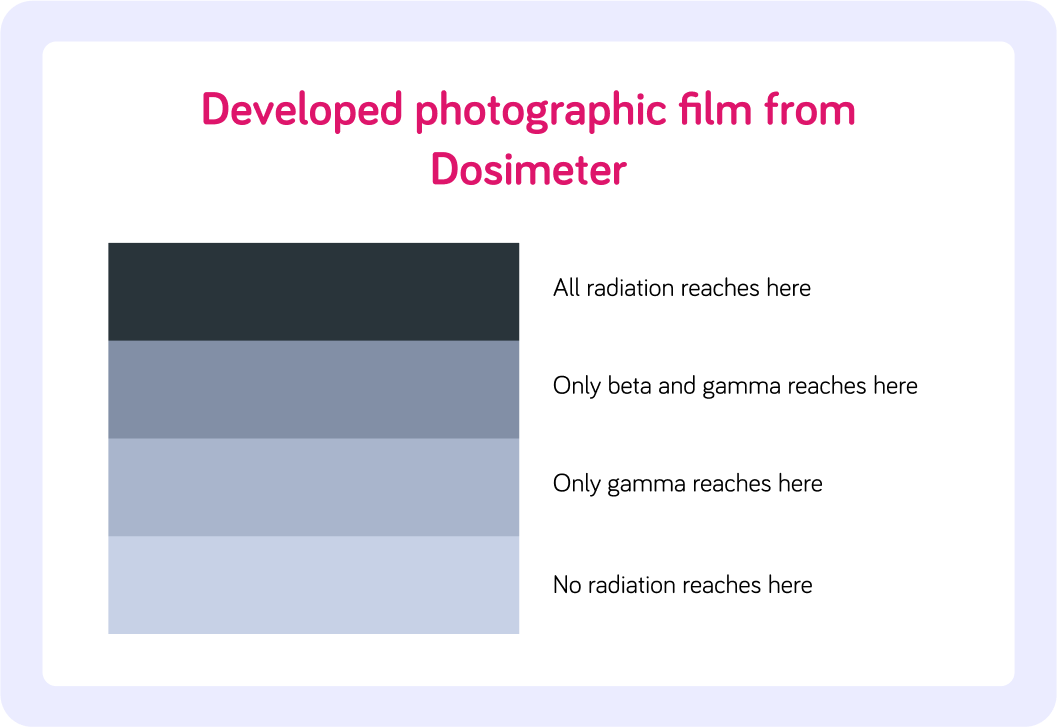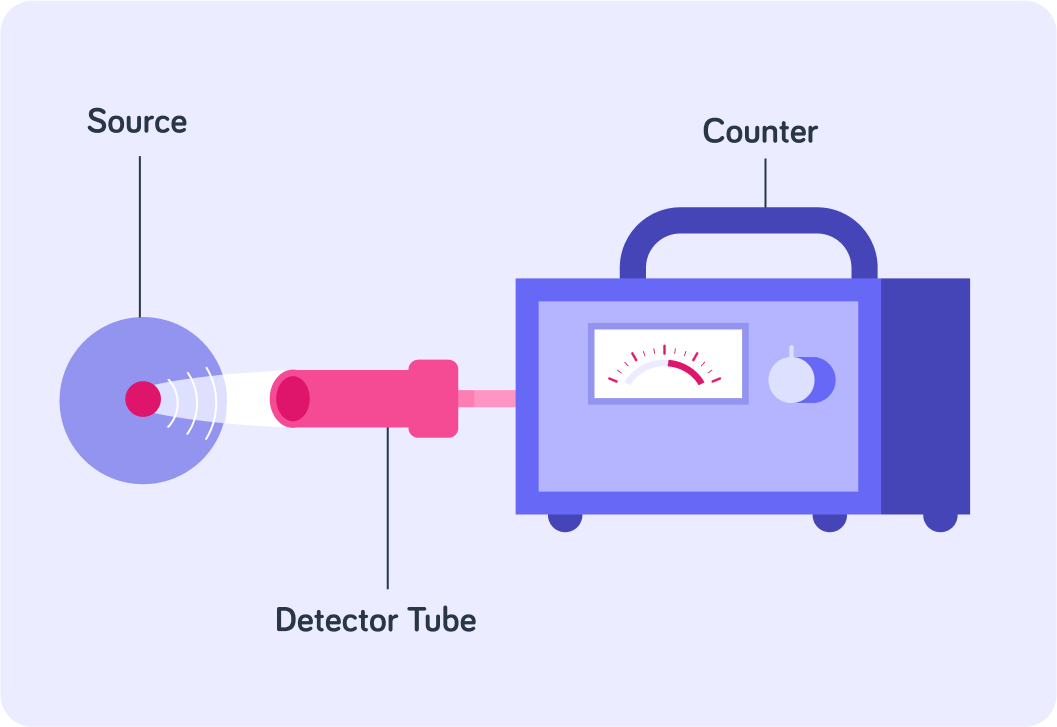YOU ARE LEARNING:
Measuring Radiation

Measuring Radiation
We can use photographic film and Geiger-Muller tubes to detect and measure radiation.
A substance is radioactive when it contains unstable isotopes. The isotopes emit radiation in order to become stable. What are the four types of radiation a radioactive source can emit?

You can select multiple answers
This is a detector badge or dosimeter
It can be used to see how much radiation a person has been exposed to - the dose of radiation.

The piece of photographic film in the dosimeter will detect radiation in the environment
But the photographic film is partly covered by layers of paper, aluminium and lead, so it will only be coloured by the types of radiation that can penetrate paper, aluminium or lead.

Alpha radiation is weakly penetrating. It is easily blocked by just a piece of paper. If this person encountered some alpha radiation, where would the photographic film detect the radiation?
A) At point A B) At point B C) At point C D) At point D


Beta radiation is absorbed by aluminium and lead, but it penetrates paper, so where on the photographic film would it be detected?
A) At points A and B B) At points B and C C) At points C and D


Gamma radiation is only absorbed by lead. Where on the photographic film would it be detected?
A) At points A, B and C B) At points B, C and D


The more radiation the film is exposed to, the darker it will get. If the dosimeter is exposed to all types of radiation, where will the film be the darkest? Answer A, B, C or D.


So when the piece of photographic film has been developed...
it will show both the amount and the type of radiation it (and the person carrying it) has been exposed to.

Dosimeters or "film badges" are quite cheap and convenient methods of monitoring exposure to radiation
There are more precise detectors though, for example a Geiger-Müller counter and tube.

This is a Geiger-Muller (GM) tube and counter
It is named after Hans Geiger and Walther Müller. You can also refer to it as a "Geiger tube", or a "Geiger counter", or a "G-M tube/counter".

How does the G-M tube and counter work?
It has a tube that detects radiation. Each time it absorbs radiation, it transmits an electrical pulse to the machine, which produces a clicking sound.

The more radiation there is, the _______ clicks you'll hear.
A) more B) fewer


If we place a G-M tube and counter near a radioactive sample, it records all the decays that reaches it per second, by counting. We call that the ______ ______.
A) radiation type B) decay rate C) count rate


Detectors such as a Geiger-Muller counter record the decays that reach them each second - alpha particles, beta particles and gamma rays
We call that the count rate of the sample. We can use it to estimate the activity of the sample. More on that in later lessons.

A G-M tube and counter actually only records a fraction of the total amount of decays per second in a radioactive source
If it should count all the decays that happen in that source, it would have to somehow surround the whole source. That is usually not possible.

Even in a room that does not contain a radioactive substance, we can detect some radiation with a Geiger-Muller tube. What do we call the radiation we are detecting?

Summary
We can use dosimeters or film badges...
to measure the amount and type of radiation a person is exposed to.
We can use a Geiger-Muller tube and counter...
to measure the count rate of a radioactive source more precisely.
The count rate of a source of radiation...
is only a fraction of the total number of decays per second in a radioactive substance.
The G-M tube and counter also counts decays from background radiation, not just decays from the source we want to measure. More on that in later lessons.
